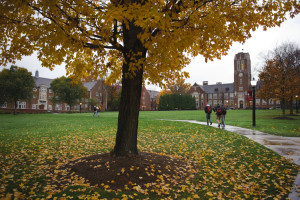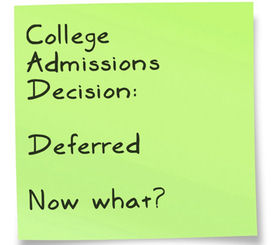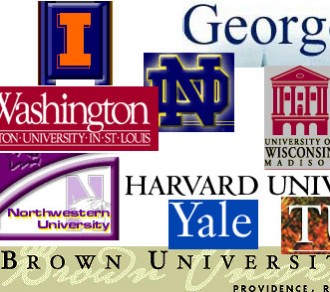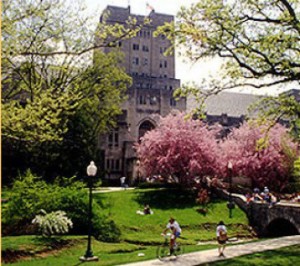4. Past PFE Posts category archive
Sticker Prices Hide the REAL Cost of College 0
 One of the many acronyms that college bound students encounter is COA or cost of attendance. It constantly amazes me when media only talks about tuition costs†when they run stories about colleges. What they should do is include the fees, room and board and personal expenses to that figure. That will often bring the COA up another $18,000 or more.
One of the many acronyms that college bound students encounter is COA or cost of attendance. It constantly amazes me when media only talks about tuition costs†when they run stories about colleges. What they should do is include the fees, room and board and personal expenses to that figure. That will often bring the COA up another $18,000 or more.
Private colleges that use federal money in their financial aid packages are generally running about $55,000 to $65,000 per year soup to nuts. With the exception of about 50 so-called elite colleges, most offer merit money to highly qualified students or meet the criteria for those scholarships. Admittedly, a good 50% of private colleges and out of state public’s simply offer tuition discounts in the guise of scholarships simply to get students to commit.
Having said that, I have had many students graduate in four years from fine private colleges at less cost than they would have paid at a state university where the latter would be offering only student loans. For many middle income families state schools often create the largest financial burden to a family despite the lowest published cost.
In addition, due to the ever increasing strategy of financial aid leveraging and preferential packaging, an applicant’s academic profile will greatly effect how much grant or scholarship aid he or she will get. While not used by all colleges, these practices will negatively impact the aid a student who is in the lower quarter of the applicant pool. That is why I place a great deal of emphasis on researching the current class profile or common data set to measure where the student may fit in that demographic.
In other words, if two colleges have similar costs of attendance, a student may be offered entirely different financial aid packages should one of the colleges be using leveraged analysis or preferential packaging. Unless, you do a money saving Dry Run with us or someone else who is familiar with the financial aid practices at many colleges, you will seldom know which college is offering the best value from a financial standpoint. Even now with the required Net Cost Calculator on college websites, you still won’t know the true bottom line cost of that college until one week following the student’s acceptance.
The differences outlined above can be as large as $15,000 a year or more. These differences are often masked by confusing itemized costs. That is why we encourage all families to include a realistic money-saving Dry Run step in their college planning. If you have not done that yet, then what are you waiting for? Do not repeat the experience that this parent had.
Brand Name Paralysis 0
 If you were to ask a random group of kids Name three competitive colleges, most would reel off Harvard, Yale and Princeton without any hesitation. In fact HYP has practically become an acronym for any brand name college. It is at this time of year that the mail box gets the most attention. Especially if the college bound senior has applied to the most competitive colleges in the country.
If you were to ask a random group of kids Name three competitive colleges, most would reel off Harvard, Yale and Princeton without any hesitation. In fact HYP has practically become an acronym for any brand name college. It is at this time of year that the mail box gets the most attention. Especially if the college bound senior has applied to the most competitive colleges in the country.
With all the attention given to magazine rankings, colleges that are on the top of the list are often the only ones bright high school students think of when developing his or her initial list. I smile inwardly when I realize (after a few minutes of conversation) that a family has what I call Brand Name Paralysis or BNP.
It is a neurological disorder, but not a serious one. However, not treated, it could result in unnecessary stress, abdominal pain and a depleted investment account. Of course, I am joking kind of. Treatment is painless but does call for the patient to have an open mind and a modest ability to think outside the box. Review our college planning timeline to understand how we do this.
In our offices we have large maps showing the colleges in all 50 states and Canada. We have placed pins into the colleges so that families can see where other students we have guided have  matriculated. It is great fun to place a pin on a college name that a student (or parent) has never heard of prior to meeting with us. Two such examples would be the college to the right and in the upper left of this page. Can you tell me the names of those colleges?
matriculated. It is great fun to place a pin on a college name that a student (or parent) has never heard of prior to meeting with us. Two such examples would be the college to the right and in the upper left of this page. Can you tell me the names of those colleges?
One is in Pennsylvania and the other is in California. In both instances students have received wonderful educations without any debt, yes ZERO! But there is more to it, much more. All of which we can cover in a complimentary get acquainted consultation. We look forward to sharing more with you. Call (978) 820-1295.
Spring Rites of Passage for the College Bound 0
 Many high school seniors have heard back from some of the colleges to which they applied. The most competitive colleges will be sending out their letters no later than April 1. All students (and parents) will then have thirty days to make their final college decision.
Many high school seniors have heard back from some of the colleges to which they applied. The most competitive colleges will be sending out their letters no later than April 1. All students (and parents) will then have thirty days to make their final college decision.
If you are a client be sure to FAX both your acceptance letters and subsequent financial aid letters to us as they come in. We will then help you make your decisions based on both academic and financial criteria. If you have done a Dry Run earlier in the process, we will update the numbers.
Unfortunately, every year I hear about families who experienced something like this family did. There are many uncertainties in our world, but this does not have to be one of them. If you have college aspirations, take the time to discuss the options in paying for college as a family unit. In fact, call us to learn how thousands of families are paying for college from income alone, and not borrowing a nickel.
Attention juniors and sophomores. Two other spring rites are for you. If you have a list of possible colleges (and you should) try to do some college visits while classes are still in session. If some of the colleges on your list are too far away, they may be coming to you!
March, April, and May is ‘College Fair’ time. Check the National Association of College Admission Counselor site here for the date, time and location near you! There are several college fairs coming up in many states. For instance, Anaheim, CA is on April 22, 2018.
Some of the so-called Elite colleges do not participate in such marketing efforts but check each college website for their travel plans. In addition, you should also check out the location for the group of 40 colleges that have been identified by the late Loren Pope in his popular tome, Colleges That Change Lives.
The second spring rite is actually a four-season ritual. Yes, I am referring to the ubiquitous standardized tests. There are a plethora of ways to prepare including no preparation at all. But if you are looking at possible merit scholarships or very competitive colleges, then you should prepare. Would you compete in your favorite sport without practicing?
But if you want to practice with unequivocally the best test prep yet, we can help. Take the demo here with 30 practice questions. For the PSAT, SAT, ACT and Math II tests, I believe there is NO better way to prepare outside of individual tutors like Kris Fox, Ann Turner or Jan LeClair. Each has been part of the PFE team for years.
If you have any questions, I look forward to answering them for you.
Best wishes for college success and beyond.
Eric
Spring Surprises 0
 The Class of 2021 has seen a year of stiff competition similar to recent years. Once again, the elite colleges rejected 95% of their applicants. They all knew the 6% acceptance rates going in but it is still tough to take rejection. And to hear that everything happens for a reason is not any consolation for those applicants who were Valedictorians with 1600 SAT scores. In any case, where ever you go, keep college a four-year or less experience. The fact is that only 38% of those who enter college this fall will have earned a diploma after four years. In addition, the current pandemic and questions about safety for students are still a concern.
The Class of 2021 has seen a year of stiff competition similar to recent years. Once again, the elite colleges rejected 95% of their applicants. They all knew the 6% acceptance rates going in but it is still tough to take rejection. And to hear that everything happens for a reason is not any consolation for those applicants who were Valedictorians with 1600 SAT scores. In any case, where ever you go, keep college a four-year or less experience. The fact is that only 38% of those who enter college this fall will have earned a diploma after four years. In addition, the current pandemic and questions about safety for students are still a concern.
The 60 or so elite colleges have over 90% graduation rates in four years. Yes, it can be that (or less) with most other colleges if you have done (and continue to do) your due diligence. Take responsibility for your education and the advising at your college.
But here are some reasons why that percentage is so shockingly low.
- ALL four-year colleges are considered. Both public and private from the non-competitive to the most competitive. Often large state universities and less competitive private institutions have weaker or overwhelmed advising staffs.
- Students may fall behind on credits earned in their major.
- They change majors more than twice; credits are not transferable.
- Students drop out for academic or affordability reasons.
- Some classes are over enrolled, limited or cutback and students are not able to take the prerequisite courses in their majors in a timely fashion.
When researching each college using the AAA method a student will be better prepared to avoid most of the above scenarios. This includes understanding the data the colleges are required to report on the Common Data Set. If you do not find the CDS on the college website or via the search box, ask admissions for it.
In any case, if the Class of 2017 thought it was competitive getting into college, they will need to consider this. Job prospects for new college graduates are at historic lows, partly caused by financial misfeasance and malfeasance on a global scale. If a recent graduate has some internship or cooperative work experience to show on his or her resume, that will help. But with the economy what it is, the challenges still remain.
The average student loan debt for graduating seniors in 2015 was $28,186. This year, I dare say the average will be at  least $30,500. Since the 1970’s student loans have increased the cost of college. In fact, that is the primary reason college costs are inordinately high! Need proof? Here it is! We are facing a student and parent loan bubble that will dwarf the mortgage and derivative frauds above.
least $30,500. Since the 1970’s student loans have increased the cost of college. In fact, that is the primary reason college costs are inordinately high! Need proof? Here it is! We are facing a student and parent loan bubble that will dwarf the mortgage and derivative frauds above.
If loans are a burden, parents and students should not hesitate to call us now. We have a sure-fire plan to show you how to become debt free sooner than you think. It makes no sense in starting off with a job that does not give you the ability to pay basic necessities, provide the comforts and lifestyle you want to have and still meet monthly debt obligations.
In the meantime, for newly minted college graduates… get ready for the toughest job you will have. Start by reading this timely New York Times article How to market yourself.
Spring Into Action 0
We are told that March 20th is the first day of spring. Can you smell the flowers yet? Our students in California, particularly the ones who have never experienced snow beyond Big Bear or Yosemite may not understand why we live in New England. For myself, I love the history of the region and the beauty each season offers. Experiencing the changing seasons is like living in four places without moving. There is always something to look forward to and seeing things with a fresh perspective.
Speaking of looking forward, many highs school seniors are waiting to hear from the colleges to which they applied. If they have followed the steps we have laid out for them, they will hopefully get the news they are hoping for and will decide by May 1 which college they will attend. But if they are put on the dreaded waitlist at their first choice colleges they will need to adjust and consider their options.
Meanwhile, current juniors and sophomores should be looking at the steps they need to be taking if they too have college aspirations. One is to take advantage of college visits while students are still on campus and attending college fairs that will be at cities around the country starting in May and continuing through the fall of the year. 
If you are a client with whom we have not had a winter/spring review as of yet, call us today to arrange a good time for your update review. If you are just beginning the process of preparing a realistic college list and would like some suggestions. Call us for a get acquainted, no obligation consultation; plan on 75 minutes for that conversation. It does not matter where you live. We are presently working with students in Shanghai, China and Stuttgart, Germany.
Generations 0
 Fifteen years ago two professors at Beloit College in Wisconsin published a list of observations they determined to be characteristic of the entering freshman that would be graduating in 2002. It went viral soon after that and became a greatly anticipated annual event in certain academic circles. It is funny, it is eye-opening and it is scary!
Fifteen years ago two professors at Beloit College in Wisconsin published a list of observations they determined to be characteristic of the entering freshman that would be graduating in 2002. It went viral soon after that and became a greatly anticipated annual event in certain academic circles. It is funny, it is eye-opening and it is scary!
For instance, if you were born post 1995, having a chat seldom involved talking. Java has never been just a cup of coffee; the US has always imposed economic sanctions against Iran; you never attended a concert in a smoke filled arena and rights of passage had more to do with when you got your own cell phone or Skype account than getting a drivers license or car.
The list that will characterize the high school Class of 2014 (that will graduate college in 2018) has not been released yet, but if it will be as terrifying as last years. YIKES!
What an interesting sociological study of the ever changing generational changes.
As a student of a certain era, I look back and reminisce from time to time. It is fun to do that isn’t it? I know that social scientists have put labels on various populations since the twenties.
In what year were you born? How well do you fit within that period of that time?
- 1928 to 1945 ~ The Silent Generation (Some might say the greatest.)
- 1946 to 1964 ~ The Baby Boom Generation
- 1965 to 1980 ~ Generation X
- 1981 to 2002 ~ The Millennial Generation
Now, it may be easy to place yourself into one of those chronologically but if you want to know how you truly fit in a particular generation, I suggest you take the 14 question POP quiz below. 🙂
I took it and found it uncannily accurate. Find out for yourself here.
Presently, all of our students are part of the Millennial Generation and most (but not all) of their parents are Generation X. Holy coffin nails Batman! None of them were alive when JFK was killed. Do they even know what JFK was planning on doing as President? How much have they learned about history in AP History? I hope more than I think based on the annual survey below.
Are you ready for this? Of course you are. Let me know what you think you could add to the list.
Early College Decisions 0
 At the end of December, many students who applied to college Early Decision or Early Action are finding that they’ve been neither accepted nor rejected, but deferred. If you find yourself in this limbo, here are some guidelines for how to proceed.
At the end of December, many students who applied to college Early Decision or Early Action are finding that they’ve been neither accepted nor rejected, but deferred. If you find yourself in this limbo, here are some guidelines for how to proceed.
1. Don’t Panic ~ Most likely, if you’ve been deferred your credentials are in the ballpark for getting accepted. If they weren’t, you’d be rejected. However, your application wasn’t so far above average that the college wanted to give up a spot in the entering class until they could compare you to the full applicant pool. The percentages vary from college to college, but many students do get accepted after being deferred.
2. Find Out Why You Were Deferred ~ Unless the college asks you not to do so, give the admissions office a call and try to find out why you were deferred. Be polite and positive when making this call. Try to convey your enthusiasm for the college, and see if there were particular weaknesses in your application that you might be able to address. Some early applicants are deferred because they did not show enough interest in the college prior to submitting the application. Could this be you?
3. Update Your Information ~ Chances are the college will ask for your midyear grades. If you were deferred because of a marginal GPA, the college will want to see that your grades are on an upward trend. Also, think about other information that might be worth sending:
- New and improved SAT or ACT scores
- A new leadership position in a group or team
- A new honor or award
4 . Send a New Letter of Recommendation ~ Is there someone who knows you well who can really promote you effectively? If so, an additional letter of recommendation might be a good idea. However, make sure the college allows extra letters. Ideally, this letter should talk about the specific personal qualities that make you an ideal match for the particular college that has deferred you. A generic letter won’t be nearly as effective as a letter that explains why you are a good match for your first-choice college.
. Send a New Letter of Recommendation ~ Is there someone who knows you well who can really promote you effectively? If so, an additional letter of recommendation might be a good idea. However, make sure the college allows extra letters. Ideally, this letter should talk about the specific personal qualities that make you an ideal match for the particular college that has deferred you. A generic letter won’t be nearly as effective as a letter that explains why you are a good match for your first-choice college.
5. Send Supplemental Materials ~ Many applications, including the Common Application, provide the opportunity for sending in supplemental materials. You don’t want to overwhelm the admissions office, but you should feel free to send in writing or other materials that will show the full breadth of what you can contribute to the campus community.
6. Be Polite ~ As you try to get out of deferral limbo, you’re likely to correspond with the admissions office several times. Try to keep your frustration, disappointment and anger in check. Be polite. Be positive. Admissions officers are remarkably busy this time of year, and their time is limited. Thank them for any time they give you. Also, make sure your correspondence doesn’t become pesky or harassing.
7. Have a Back-Up ~ While many deferred students do get accepted during regular admissions, many do not. You should do all you can to get into your top choice school, but you should also be realistic. Make sure you have applied to a range of reach, match and safety colleges so that you will have other options should you get a rejection letter from your first choice.
If you have been deferred but have new information to present to the college, you’ll want to write a letter presenting the updates.
Application Strategies 0
The majority of college bound students do it the wrong way; is your student in the majority? Fall is college application time for seniors. The Class of 2013 was the largest most competitive high school class in American history. High school seniors around the country are applying to their Dream Schools.
Every year the following scenarios are played out by countless ambitious students everywhere.
SCENARIO ONE: The first is when a student falls in love with a single college but his academic profile is in the lower 50% of the applicant pool. It could be a college that historically has less than a 10% acceptance rate or as high as 40%. He applies in one of the early application programs (ED or EA) thinking he will have a better chance of admittance. It is his “dream school” and, while he may grudgingly add a few more colleges to a list to satisfy a nervous parent, he never really looks beyond that “dream school”. Until, of course, the rejection letter arrives in December. Because his focus and enthusiasm was wrapped up in his dream school, he did not pay much attention to the requirements of his other colleges. Some of which had January regular application (RA) deadlines, none of which he is prepared to meet.
SCENARIO TWO: This is more common. As above, the student may have what I call brand name paralysis and builds a list solely of “BNP schools.” These are schools like Harvard, Yale, Stanford, UC Berkeley and Pomona where the acceptance rate is so ridiculously low that no matter how good your grades and test scores are, getting in is never a sure bet. Unfortunately, like the “dream school” students, they too are often disappointed. Likely they have been told by parents, teachers, or a guidance counselor that they are excellent prospects for these schools because they are so unique and special. So, they never really look seriously beyond those “lottery schools”…until, of course, the rejection letters start coming in the mail in the spring.
Because of the huge increase in student applications, some of the top students are even being rejected by their safety schools . (Colleges do not want to be thought of as safeties, so they are sending a message basically saying we want you only if you want us.) Talk about humble pie!
These two scenarios illustrate why I believe that college planning should start with an honest; realistic self-assessment. This means taking a critical look at the student’s academic statistics, interests, learning style and personality.
Obviously financial issues are important too. You can learn how to minimize student (and parent) debt here.
In other words, begin the college search by identifying several schools where the student has a good bet of acceptance and more importantly – where he/she would be happy to spend a few years. These are the schools where the student’s academic profile places him or her in the top 25% of the accepted student pool. Once students genuinely appreciate (if not love) at least one safety school, they can safely move on to more selective schools and, yes, even some of the aforementioned most competitive colleges. Ultimately applying to no less than 8 nor more than 12 colleges.
College Rankings 0
 The popularity of the US News & World Report’s annual College Issue has spawned numerous copycats, each trying to offer its own spin on how it rates colleges. It’s all about selling magazines. The more they move off the newsstand, the higher the advertising rates they can charge.
The popularity of the US News & World Report’s annual College Issue has spawned numerous copycats, each trying to offer its own spin on how it rates colleges. It’s all about selling magazines. The more they move off the newsstand, the higher the advertising rates they can charge.
It’s more about the money than the value of the content. What does it really mean when you read about six year graduation rates, the average financial aid a student receives, the reported professor student ratio, and average loan burden upon graduation and SAT scores?
It is interesting, more and more colleges are either eschewing such assessments or not returning the self-reported questionnaires sent to them by the publications. But when a college is recognized as in the top 10 or Best of in a particular category they are not shy about emblazoning that recognition proudly across their website.
And yes, I am one of those that buy those magazines. I buy them because you are, and I want to be ready for your questions when you ask.
Why do you recommend the 41st ranked University of the South @ Sewanee for Carolyn instead of the well known 18th ranked Colgate University?
I appreciate such questions. More often than not, the answer has to do with a combination of factors. The academic profile of the student and learning style, how a student expresses interest in different majors (however vague they may be early on), financial parameters of the parents, campus ethos and the nature of the academic and career advising.
All of which we take into account when suggesting the starter list of fifteen colleges for a junior. I invite you to arrange a FREE get acquainted conversation with us. We work with students all over the world thanks to the Internet. Please click here for more information.
Searching for that Perfect College? 0
 The perfect college doesn’t exist. Almost any college, whether it’s an Ivy or a local community college, can be the foundation for productive and enjoyable college years. Every student’s experience has its ups and downs. Your parents may know what I mean. With colleges putting so much effort into diversification in recent years, few students fit the cookie-cutter images that proliferate in college view books.
The perfect college doesn’t exist. Almost any college, whether it’s an Ivy or a local community college, can be the foundation for productive and enjoyable college years. Every student’s experience has its ups and downs. Your parents may know what I mean. With colleges putting so much effort into diversification in recent years, few students fit the cookie-cutter images that proliferate in college view books.
Like with most things in life, college is what you make of it. If you are determined to study hard and find your social niche, you will probably be happy no matter what school you attend. However, that does not mean you can just throw darts at a map listing all colleges coast to coast. But it is always fun to put a pin on our office wall map when a student matriculates to a college he or she never knew existed until they went through the process I describe below. With hundreds of colleges to choose from, there will be some that fit better than others. But I have found that many students start the process without paying much attention to the purpose of going to college in the first place.
Fortunately, that can be easily rectified with some self-assessment by the student. In other words, you start the process with a careful look at yourself, not with a list of colleges. It is your own honest assessment of your academic profile, interests, learning style, and natural strengths that is central to finding a good fit college.
Most students start their lists, not only by listing well-known schools but the most competitive first. It is a faulty strategy. Before you start poring over view books and catalogs from colleges, you want to examine yourself as a person and as a student. Such an appraisal will yield data about yourself that will allow you to move forward with confidence.

So, once that is all done you can consider other things, like location, total enrollment, male to female ratio, and athletics. Do you want a college within easy driving distance to home or across the country? Many students feel both callings at one time and another. Going to a college in the same state can still provide the independence and freedom students crave if they don’t commute. If you do not plan to be going home often, however, beware of the suitcase school, where the majority of students are locals who split the campus on the weekends.
The current health care concerns based on a “novel” strain of the common Coronavirus called Covid 19 has many people concerned about how far away from home to go college. However, if you are willing to go over 300 miles from home, your pool of prospective schools will grow significantly, not to mention chances of admission may be enhanced as well. That is, if you show some genuine measure of demonstrated interest.
By the way, do NOT dismiss a college without doing your AAA due diligence simply because it has fewer students than your high school. In college, you will likely have peers from all over the country and many countries, unlike your little community of students whom you have known most of your life. It is a big world and your journey has just begun. No better place to do it than within a community where you can learn from both professors as well as fellow undergrads that come from different parts of the globe. Each of you can share ideas and experiences that will be mutually beneficial.



